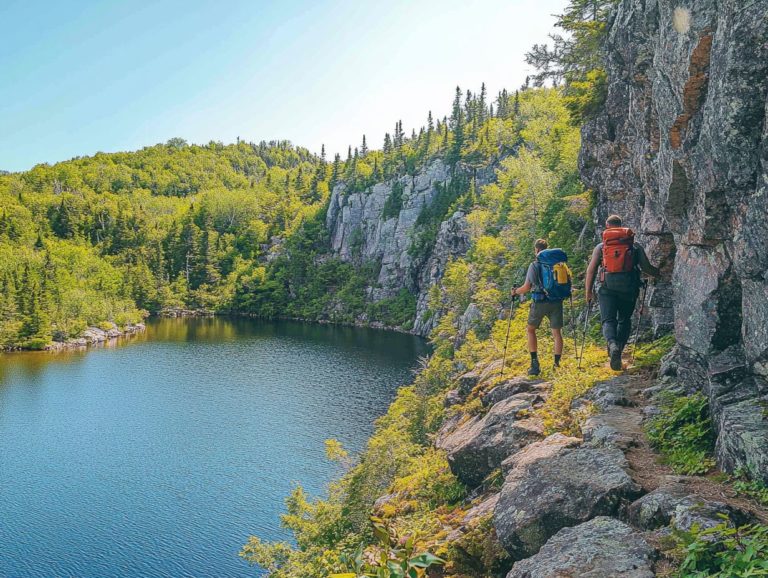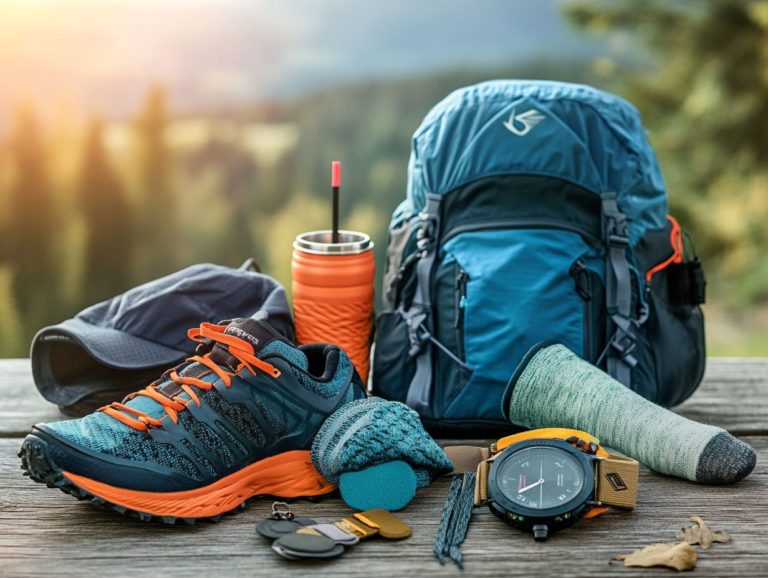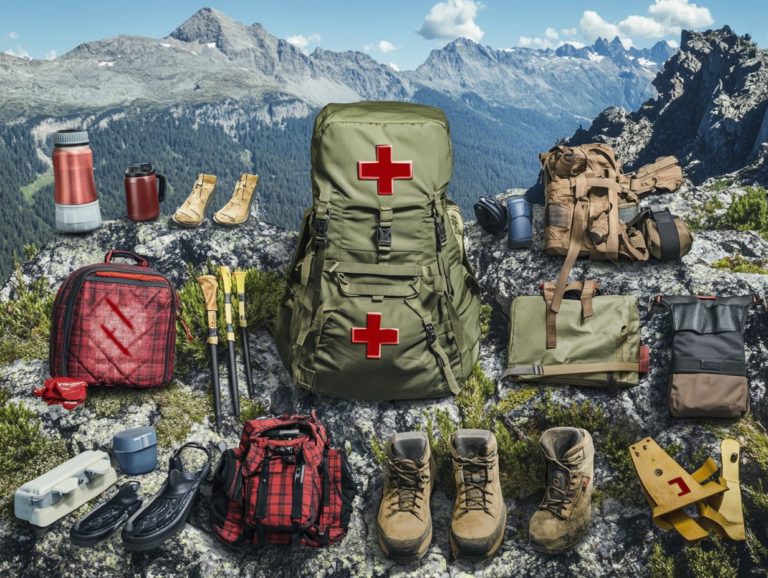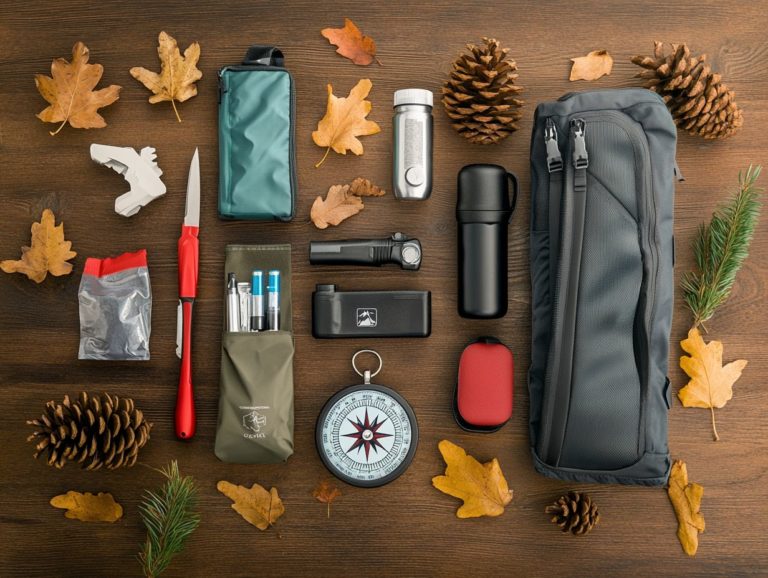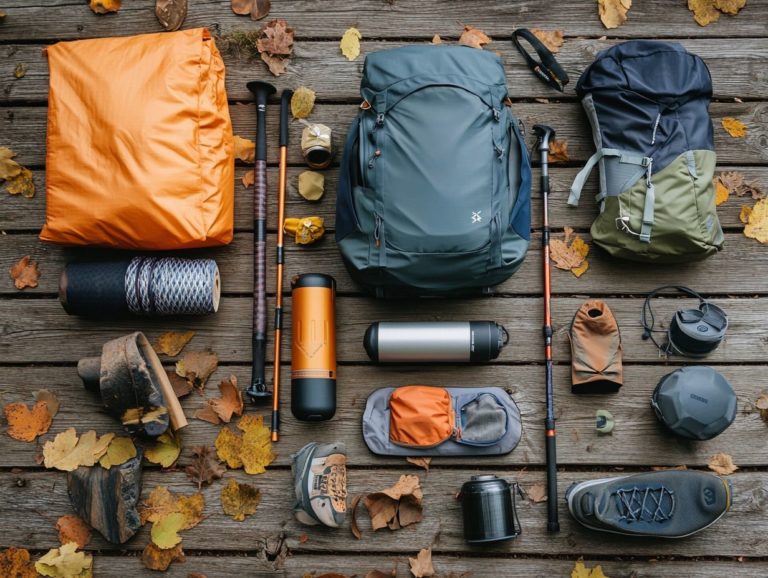Best Practices for Hiking in Groups
Are you excited to hit the trails with friends? Let s jump in!
Contents
- Key Takeaways:
- Benefits of Hiking in Groups
- Choosing the Right Group
- Planning for a Group Hike
- Group Dynamics on the Trail
- Dealing with Challenges and Emergencies
- Post-Hike Reflection and Feedback
- Frequently Asked Questions
- 1. What are some general best practices for hiking in groups?
- 2. How many people should typically be in a hiking group?
- 3. How should roles and responsibilities be delegated within a hiking group?
- 4. What should be included in a pre-hike briefing for a group?
- 5. How can group dynamics be managed effectively during a hike?
- 6. What are some important safety considerations for hiking in groups?
Key Takeaways:
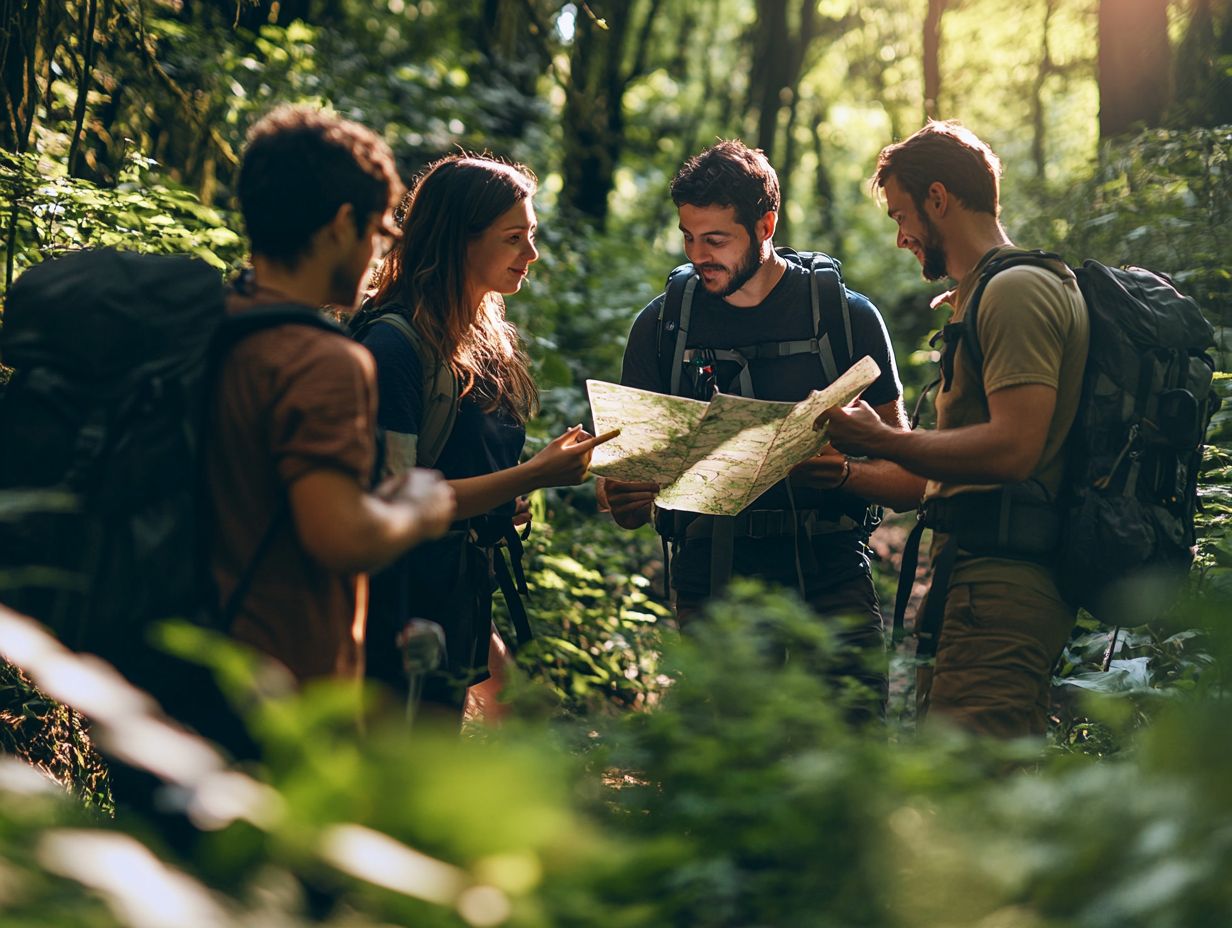
- Hiking in groups provides social and safety benefits, making it a preferred choice for many outdoor enthusiasts.
- When choosing a group for a hike, consider experience level, fitness, and compatibility to ensure a successful and enjoyable trip.
- Proper planning and communication are crucial for a group hike, including logistics and decision-making strategies.
Benefits of Hiking in Groups
Hiking in groups presents a wealth of benefits, making it an excellent choice for both beginners and seasoned outdoor enthusiasts. It enhances social interactions and allows you to bond with friends and family over shared experiences in nature.
Hiking with others improves safety because, as a collective unit, you find your way on the trails more effectively and exchange essential tips. You also adhere to outdoor etiquette, which refers to the proper behavior while hiking, cultivating a supportive atmosphere.
The presence of fellow hikers can also boost your confidence, especially if you re venturing into the wilderness for the first time. This ultimately enriches your overall hiking experience.
Social and Safety Advantages
The social and safety advantages of hiking in groups are truly invaluable, transforming your outdoor experience into something both enjoyable and secure.
When you venture into nature with others, you not only benefit from shared navigation skills but also create a collaborative environment that enhances decision-making. A group can tackle challenges like sudden weather changes or unexpected terrain by pooling collective knowledge, ultimately protecting each member.
The camaraderie forged during these excursions lays the groundwork for lasting friendships and enriches your journey. As you share tips on outdoor etiquette and navigate trails together, you cultivate mutual respect and awareness, reinforcing the importance of safety while crafting unforgettable memories in the great outdoors.
Choosing the Right Group
Selecting the right hiking group is crucial for ensuring both enjoyment and safety in your outdoor adventures, especially if you re a beginner who may not yet be acquainted with essential hiking techniques.
Factors to Consider
- Experience Level: Assess the skill levels within the group to ensure that everyone can enjoy the hike safely and comfortably.
- Hiking Gear: Evaluate the type of hiking gear they use to ensure compatibility.
- Preparation: Understand the preparation needed for various trails.
As a beginner, you might find immense value in hiking alongside seasoned adventurers who can guide you through essential techniques and navigation skills.
The right footwear, weather-appropriate clothing, and well-maintained packs can make a world of difference in comfort and safety. Proper planning also involves an understanding of the trail s challenges and ensuring that all members are equipped with necessary supplies like food, water, and first aid kits.
When you weave all these elements together, you create a hiking adventure that accommodates everyone s abilities, enhancing both enjoyment and safety.
Planning for a Group Hike
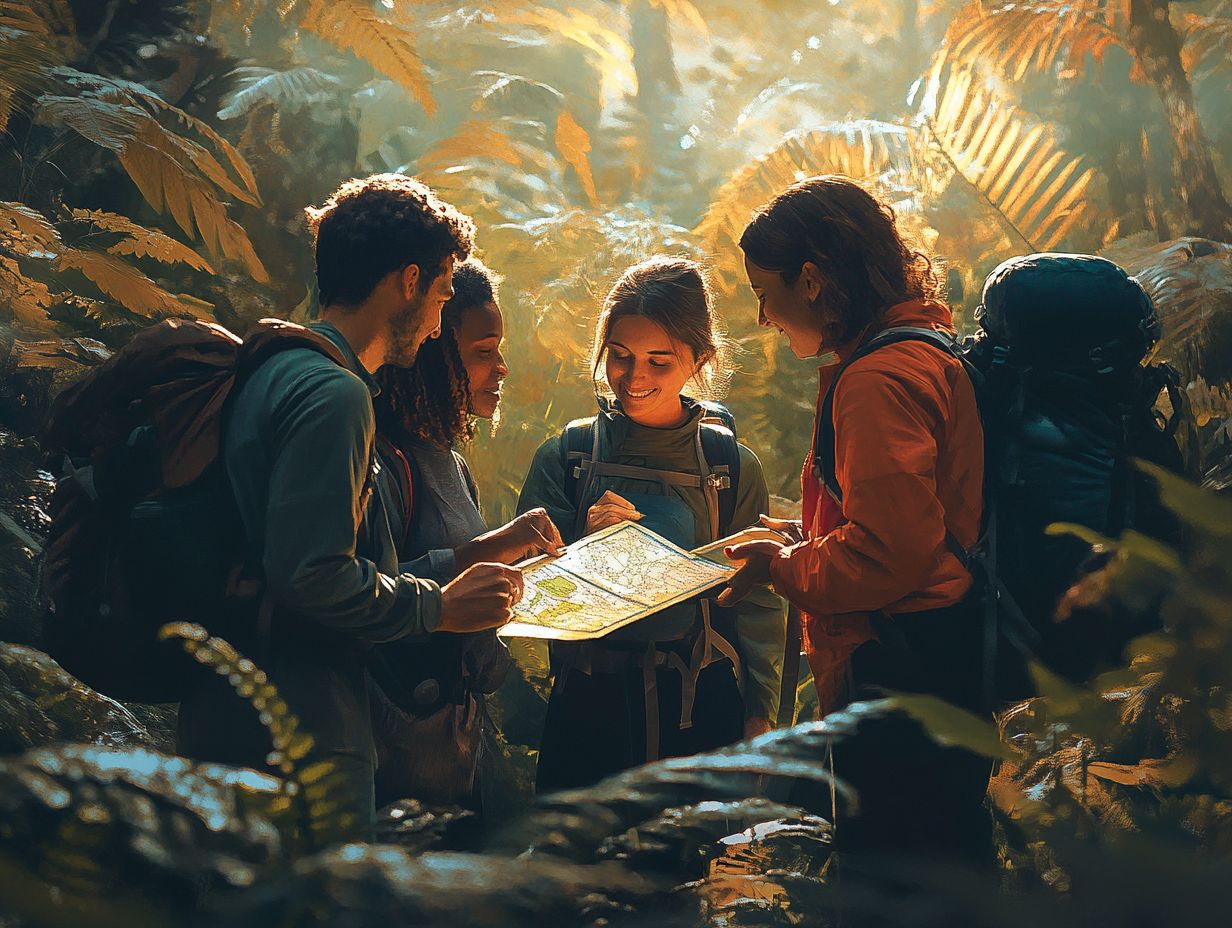
Effective planning for a group hike is essential. It ensures everyone is aligned on hiking preparations, techniques, and the safety measures necessary for a successful outing on the trail.
Essential Preparations and Logistics
To ensure your group hike is successful, careful planning is essential. This includes planning your trail guides thoroughly. Remember to consider hiking safety and GPS navigation.
Evaluate your chosen route carefully. Keep in mind the skill levels of all participants and the anticipated weather conditions, which can greatly affect visibility and overall trail safety.
Utilize reliable navigation tools like topographic maps and mobile apps to aid in route assessment. Make sure everyone is informed about potential hazards.
Engage in discussions about safety measures. Cover appropriate gear, hydration strategies, and emergency protocols. This preparation ensures that every participant is fully ready for the adventure.
This groundwork not only elevates the enjoyment of the hike but also fosters a sense of camaraderie among group members.
Group Dynamics on the Trail
Understanding group dynamics on the trail is crucial for a harmonious hiking experience. Prioritize effective communication and adhere to hiking etiquette for seamless decision-making.
Communication and Decision-Making
Effective communication and decision-making are vital in hiking groups. These ensure that every member is informed about safety protocols and trail etiquette.
It s advisable for groups to engage in open discussions before setting off on the trail. This provides participants an opportunity to express their preferences and concerns.
Using hand signals or other non-verbal cues can enhance communication during the hike. This is particularly useful in noisy environments where verbal exchanges may be challenging.
Respecting individual preferences regarding pace and resting intervals fosters a more inclusive atmosphere. By establishing clear decision-making processes, you can navigate challenges confidently.
This adherence to established hiking guidelines ensures that everyone enjoys a safe and pleasant outdoor experience.
Dealing with Challenges and Emergencies
Navigating challenges and emergencies on a hike requires a proactive mindset. Be ready! Understanding hiking safety protocols will enhance your adventure.
By doing so, you ll be prepared to tackle any situation that may arise, ensuring both your safety and the enjoyment of your adventure.
Strategies for Handling Difficult Situations

Implementing effective strategies for managing challenging situations is essential for ensuring your safety while hiking. This paves the way for a successful outdoor adventure.
When you encounter emergencies in the wilderness, maintaining your composure is vital. It allows for clear thinking and knowledge-based decision-making.
One highly effective approach is to employ established hiking techniques. Identify landmarks or use a compass for navigation. These can significantly help you find your way back to safety.
Enhance your outdoor skills by enrolling in specialized classes. You ll learn crucial tactics like first aid, terrain navigation, and survival skills.
Mastering these abilities boosts your confidence and prepares you for unexpected challenges, making your journey in nature safer and more enjoyable.
Post-Hike Reflection and Feedback
Post-hike reflection and feedback are essential for improving future group hiking experiences. Engage in open communication about what went well and what could be improved.
This allows you to refine the journey for everyone involved. Get ready for your next hike by reviewing these tips!
Improving Future Group Hiking Experiences
Improving your future group hiking experiences relies heavily on the insights you gather from post-hike reflections and the good communication methods you put in place.
By actively seeking feedback from participants, you can pinpoint specific challenges and areas that need improvement. This allows you to refine both planning and execution. Regular check-ins during hikes create an open dialogue where members feel comfortable expressing their concerns or sharing their thoughts on the experience.
You can integrate outdoor classes focused on safety and navigation to significantly enhance group cohesion. As participants develop essential skills together, they not only build trust among themselves but also gain knowledge that enables them for safer and more enjoyable outdoor adventures.
Frequently Asked Questions
1. What are some general best practices for hiking in groups?
Some general best practices for hiking in groups include planning and communicating beforehand, staying together on the trail, being aware of group dynamics, and practicing Leave No Trace principles, which help protect the environment.
2. How many people should typically be in a hiking group?
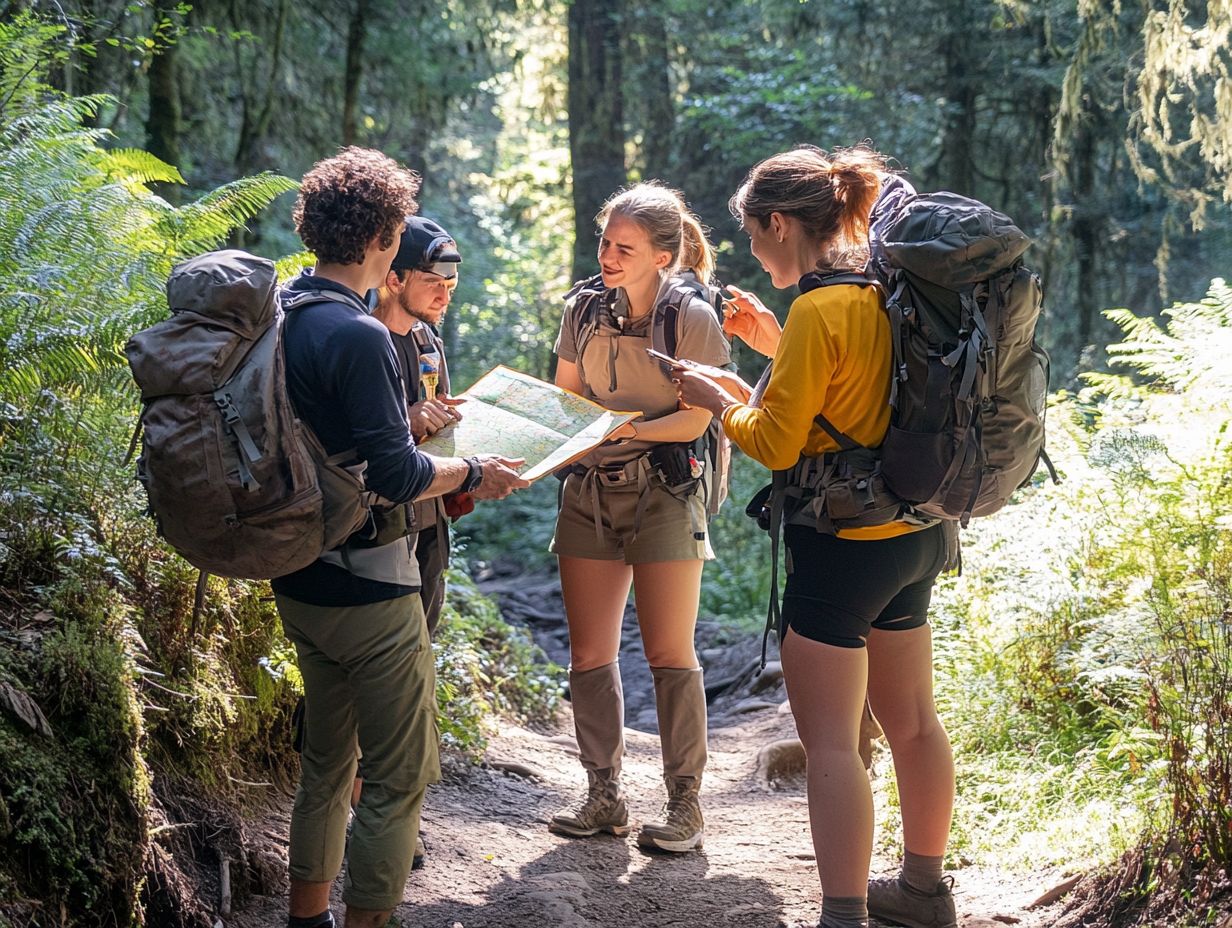
The recommended number for a hiking group is between 4-6 people. This allows for a diverse range of skills and abilities while also keeping the group small enough to manage and stay together.
3. How should roles and responsibilities be delegated within a hiking group?
Every group needs a designated leader to guide the adventure! This person is responsible for making decisions and leading the group. Other roles can include navigator, first aid provider, and morale booster. These roles should be discussed and agreed upon before the hike.
4. What should be included in a pre-hike briefing for a group?
A pre-hike briefing should include the planned route, expected duration, any potential hazards, and specific rules or guidelines for the group to follow. It’s also important to discuss emergency procedures and communication methods.
5. How can group dynamics be managed effectively during a hike?
To manage group dynamics, establish clear communication and decision-making protocols. Encourage open and respectful communication, and address any conflicts or issues that may arise. It’s also helpful to take regular breaks and check in with each other throughout the hike.
6. What are some important safety considerations for hiking in groups?
Some important safety considerations for hiking in groups include staying together on the trail, having a first aid kit and emergency supplies, being aware of weather conditions, and having a designated emergency contact who is aware of your hiking plans. Always be ready for emergencies safety is key to an unforgettable hiking experience!
We encourage you to share your own hiking experiences or join group hikes to enhance your adventures!


